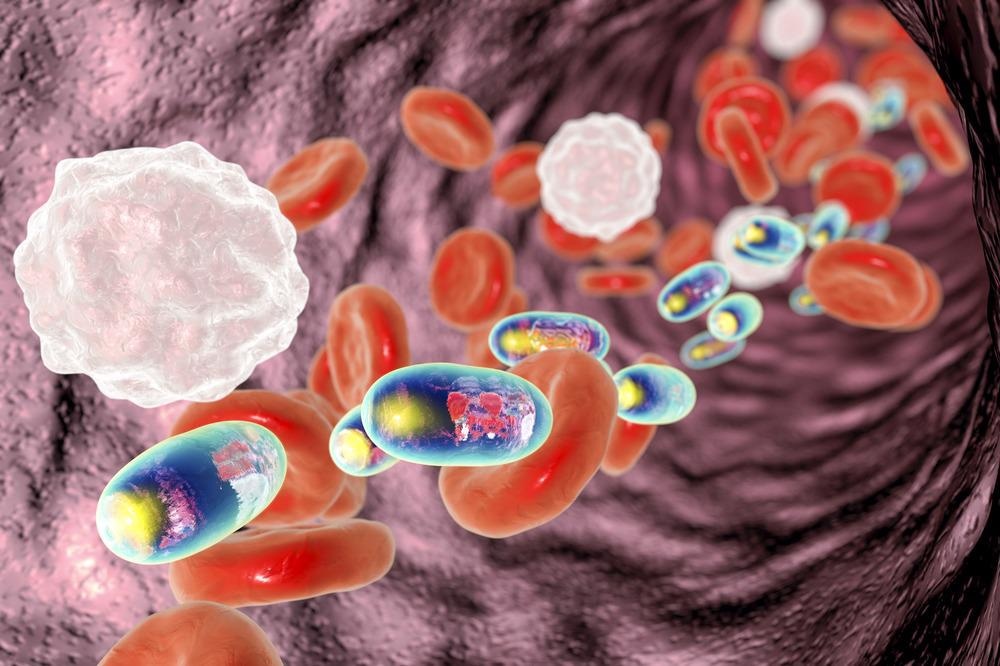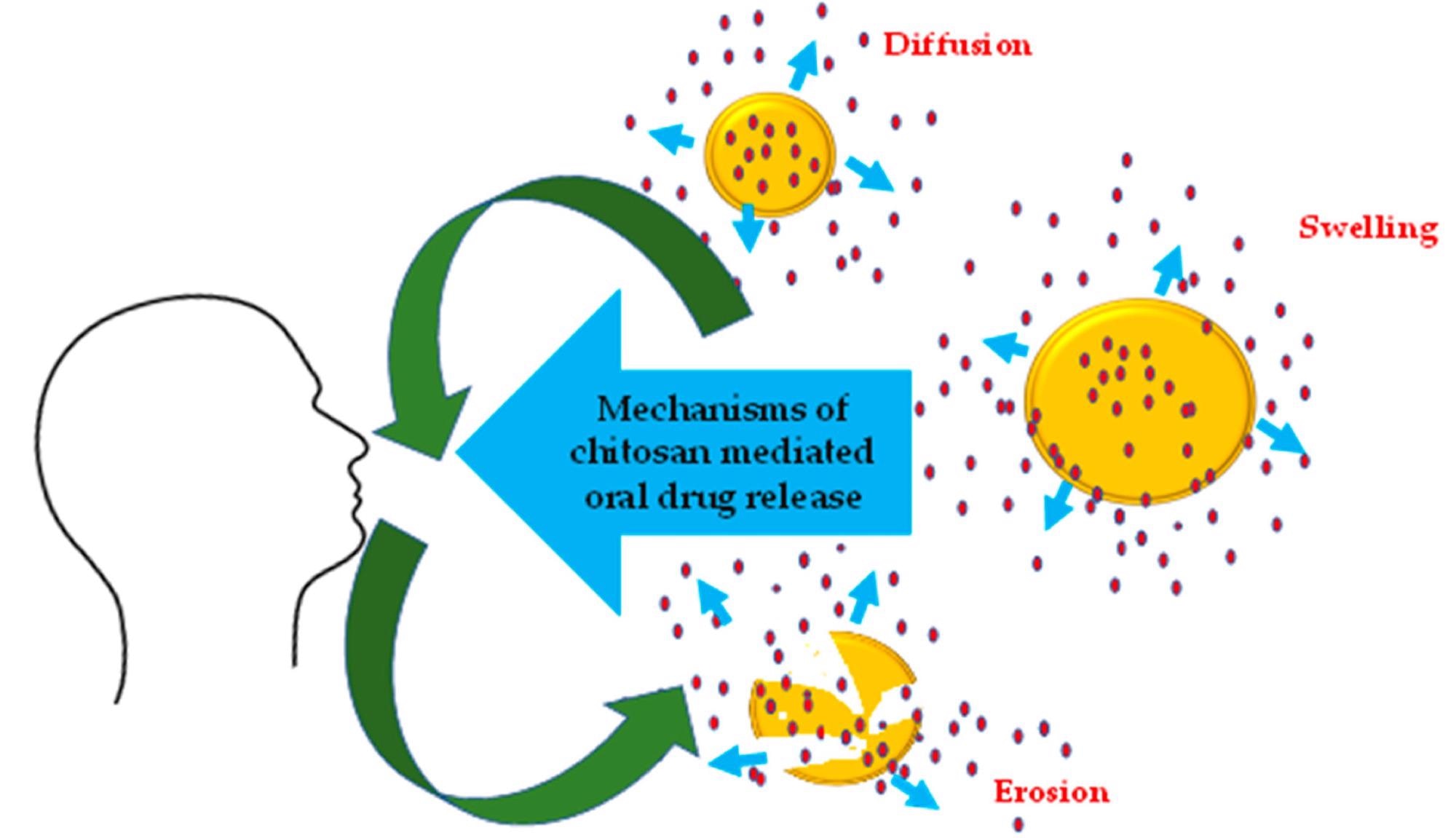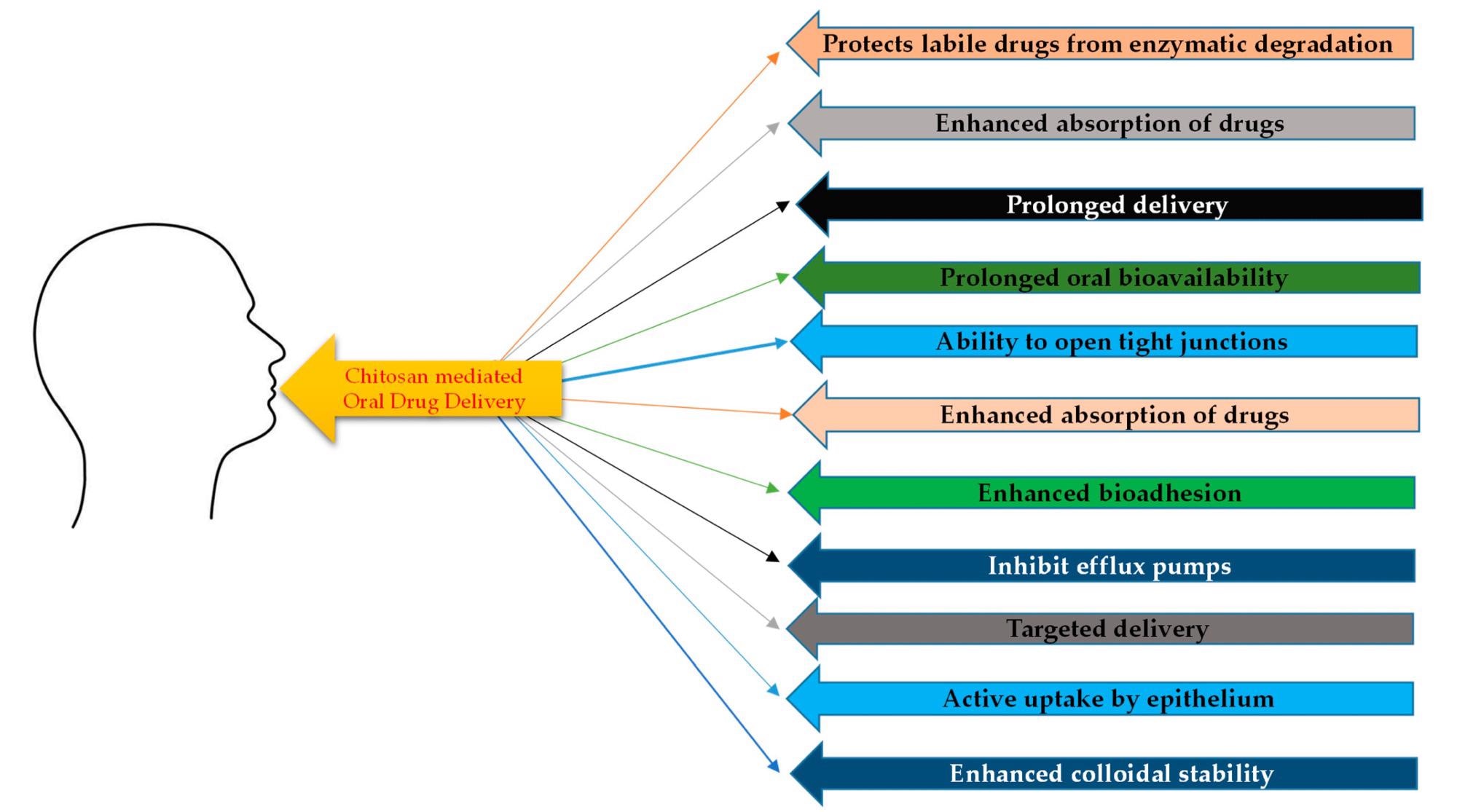Chitosan and chitosan derivatives have increasingly found application in the biomedical sciences. A review on the use of these materials in oral biomedicine has been published in the journal Polymers.

Study: Surveying the Oral Drug Delivery Avenues of Novel Chitosan Derivatives. Image Credit: Kateryna Kon/Shutterstock.com
Chitosan: A Highly Attractive Biomaterial
Chitosan, which is produced by the deacetylation of chitin, a biomolecule found extensively in crustacean and insect exoskeletons as well as the cell wall of microorganisms, is a highly attractive biomaterial. It possesses characteristics such as biocompatibility, non-toxicity, and biodegradability. This material is mucoadhesive, hemocompatible, and has potent antimicrobial and antioxidant properties.
Chitosan does not induce an immune response or inflammation in patients, but its low solubility in aqueous solutions limits its applications in living organisms. In recent years, there have been several studies exploring the potential of chitosan and chitosan derivatives in biomedical applications.
Drug delivery applications have been widely explored, and the role chitosan plays in coagulation by enabling reactions between platelets and amino groups has led to the development of chitosan-incorporated wound dressings. Wound dressings that utilize this biomaterial possess benefits such as chemoattraction, analgesic properties, antibacterial properties, hemostasis, limited scar formation, and neutrophil and macrophage activation.
In vitro and in vivo studies on chitosan and its derivatives have demonstrated potent antitumor activity in patients. Glucosamine and N-acetyl glucose are formed when chitosan and chitosan derivatives break down, and these products are non-toxic, easily excreted, and possess no immunogenicity.

Overview of various chemical modification processes that go into the making of chitosan derivatives. Image Credit: Sivanesan, I et al., Polymers
The Study
The new paper, which has been contributed to by scientists from Korea, Saudi Arabia, and India, has provided a comprehensive review on current research perspectives in this field. The team has surveyed various novel chitosan derivatives used as drug delivery materials currently and have reviewed milestones in chitosan derivative use in oral drug delivery.
Based on the review of current biomedical applications, the authors have highlighted the lack of chitosan derivative use for oral drug delivery and discussed this in-depth. Reasons as to why this may be have been explored by the authors. Future perspectives have been highlighted, covering the potential of these highly attractive biomaterials in this vital area of oral biomedicine research. Nearly one hundred previous studies have been reviewed in the new paper.
Mechanisms of drug release in chitosan and its derivatives. Image Credit: Sivanesan, I et al., Polymers
Novel Chitosan Derivatives
Several novel chitosan derivatives have been developed in recent years. Modification processes such as deamination, nitration, photoactivation, N-acetylation, phosphorylation, and metal chelation are employed to synthesize various derivatives.
Classes of derivatives that have been researched for biomedical and oral biomedical applications include N-(Aminoalkyl) chitosan, Mitomycin C Conjugated N-succinyl chitosan, acetylated chitosan, and chitosan hydrochloride derivatives. Modifications to the chemical structure of derivatives enhance properties such as their unique biomedical characteristics, solubility, drug-releasing properties, and in situ gelling properties.
Oral Drug Delivery of Chitosan and Derivatives
The review has highlighted several recent advances in oral drug delivery using nano/microparticulate chitosan and chitosan derivatives. Chitosan’s hydrophobicity and the swelling solution’s pH influence drug release, and drug release mechanisms in chitosan drug delivery systems involve swelling, diffusion through the material’s polymeric matrix, and erosion of the material.
There are many benefits to chitosan-mediated oral drug delivery systems. These include enhanced colloidal stability, active epithelial uptake, enhanced drug absorption, ability to open tight junctions, prolonged oral bioavailability, enhanced bioadhesion, and protection of labile drugs from enzymatic activities.
Several studies have investigated the benefits of chitosan-based drug delivery systems for oral biomedicine. For instance, they have been used to provide protection for orally taken insulin in the upper gastrointestinal tract. Cellulose acetate butyrate-coated chitosan spheres have been used to deliver 5-ASA for ulcerative colitis treatment. These important biomaterials have also been used for the oral delivery of therapeutic proteins and peptides.
Trimethyl chitosans have been studied for various oral drug delivery applications, including oral buserelin absorption. Liposome microspheres have been coated with trimethyl chitosans and chitosan-EDTA, with favorable results as drug delivery systems for insulin. Insulin-trimethyl chitosan polyelectrolyte complexes have displayed enhanced colloidal stability and protect insulin from degradation in studies using simulated intestinal fluid.

Listings of the limitations in oral drug delivery that chitosan and its derivatives have helped overcome. Image Credit: Sivanesan, I et al., Polymers
In Summary
The review has highlighted the remarkable contribution of chitosan and chitosan derivatives to the field of drug delivery. Compared to research on drug delivery, studies on oral drug delivery strategies using chitosan and novel derivatives are mostly lacking in the current literature. These biomaterials possess immense potential as oral drug delivery systems.
Chitosan derivatives have enormous potential benefits for non-invasive oral drug delivery, which is increasing in popularity. A current endeavor that is displaying potential is the nanostructurization of chitosan derivatives.
It has been noted that the lack of interest in this area of research may be down to its disciplinary nature. There exists a huge gap between this field’s potential and current oral biomedical applications. The authors have stated that they hope their review will increase awareness and interest in this research field and help to close current knowledge gaps.
Further Reading
Sivanesan, I et al. (2022) Surveying the Oral Drug Delivery Avenues of Novel Chitosan Derivatives Polymers 14(11) 2131 [online] mdpi.com. Available at: https://www.mdpi.com/2073-4360/14/11/2131
Disclaimer: The views expressed here are those of the author expressed in their private capacity and do not necessarily represent the views of AZoM.com Limited T/A AZoNetwork the owner and operator of this website. This disclaimer forms part of the Terms and conditions of use of this website.